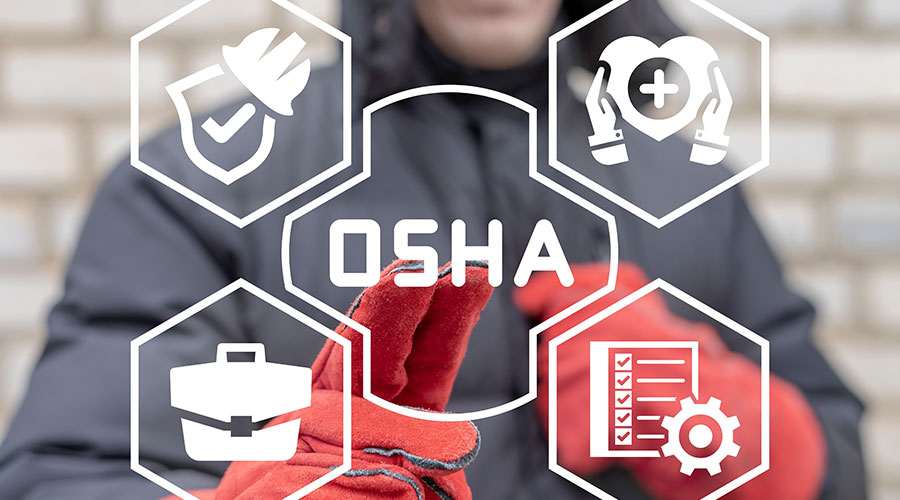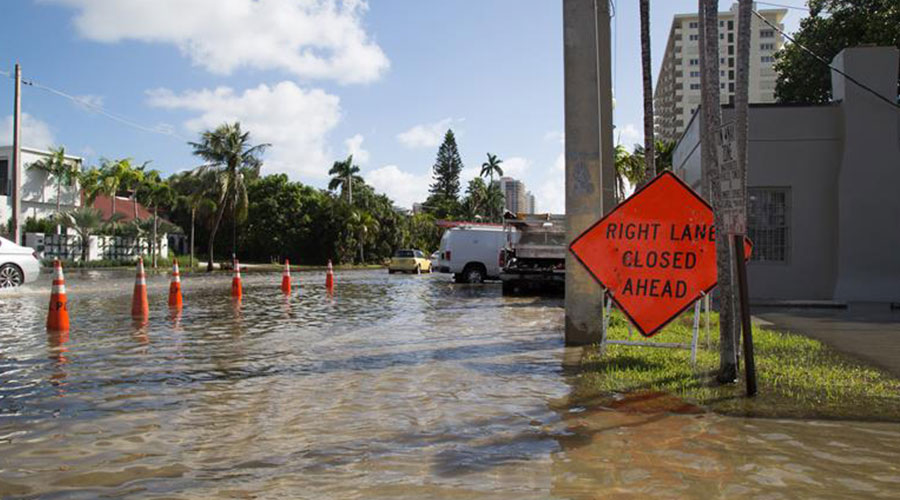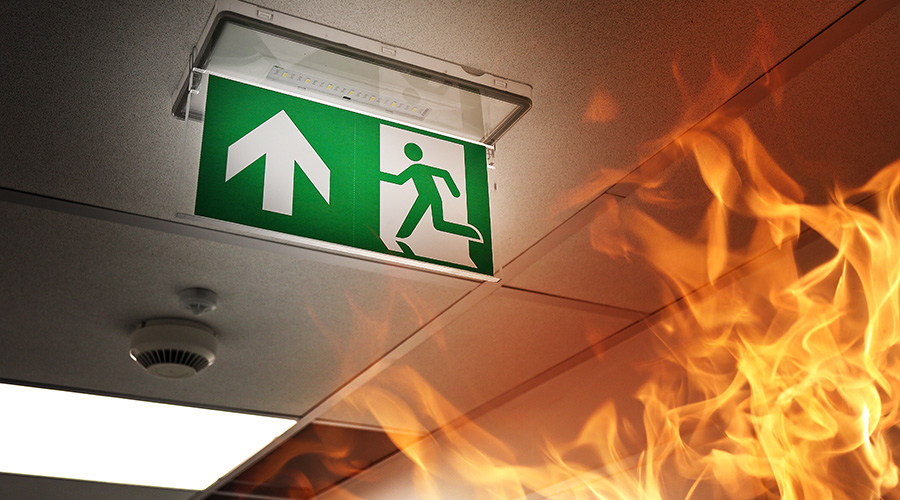OSHA Inspections: What Managers Need to Know
Consider these steps to take when OSHA inspectors arrive at facilities.
By Dave Lubach, Executive Editor
Press releases are written to grab attention, and whoever wrote this one for the Occupational Safety and Health Administration (OSHA) hit a home run with the headline.
“Risky Business: Dollar General continues to expose employees to workplace dangers with fire, electrical hazards found.”
The December 2022 OSHA press release announced a fine of $290,000 levied against the retailer for repeat citations that included blocking an emergency exit and electrical panel with merchandise. The fines were in addition to a whopping total of $15 million in fines the retailer had accrued since 2017.
OSHA investigations can shock the public with sometimes heavy penalties. The investigations can also rattle maintenance and engineering managers when they learn that inspectors are coming to their institutional and commercial facilities to conduct an investigation.
The way managers handle an investigation can make a difference in the way OSHA responds to a safety violation.
Why am I being investigated?
OSHA investigations typically take place for three reasons:
- employee or community complaint
- reportable event, such as a hospitalization, amputation or death
- national emphasis programs.
In rarer instances, an OSHA investigator – either from federal OSHA or one of the 23 states that operate their own OHSA programs – can be out and about, see an unsafe activity at a workplace and open an inquiry. No matter the reasons for OSHA launching an investigation, managers should take them seriously. Knowing that any safety breaches could land a facility in OSHA’s crosshairs should be top of mind for every manager.
“I’ve actually heard of OSHA driving to a scheduled visit, glancing over and seeing someone doing something incorrectly, immediately pulling over and doing a quick investigation,” says Rusti Dyals, national director of environment, health and safety at ESFM, an integrated facilities management company. “Those more serious events. Those are OSHA reportable events. Those are things that we’re required to notify OSHA about.”
OSHA inspectors can also randomly show up on site to conduct investigation, but those occurrences are happening much less frequently these days.
“I think one misconception is that investigations happen much more frequently than they actually do,” says Julie Sobelman, a senior occupational safety and industrial hygiene consultant. “If you go into the OSHA website and look at the data, the odds of any given facility being inspected are minimal unless something goes bad or unless they’re targeted.”
Targeted investigations take place when OSHA sees a trend in a certain industry and seeks information on ways to make conditions safer or why accidents continue to keep happening. While those kinds of investigations can often focus more on industrial occupations, they can apply to institutional and commercial facilities in cases such as heat stress.
“Inspectors can drive wherever they want to drive, look for outdoor work activity that’s going on, pull over and do an evaluation of heat stress based on the elements an employer has in place to prevent it,” Sobelman says. “That’s looking at training, shade, breaks, water, a handful of things that employers really need to do.
“Employers can’t prevent inspectors from pulling the car over and asking questions or looking around. But putting up a pop-up tent to provide shade, having a big cooler of cold water and having regular breaks, it’s easy to prevent citations for heat stress.”
What kinds of events trigger an inspection? OSHA annually releases the list of the top 10 most frequently cited standards.
The list nearly always includes violations of safety procedures in general fall protection and training requirements; handling of toxic chemicals; falls from ladders, scaffolding or aerial lifts; vehicular accidents; and personal protective equipment use.
“Falls are serious, so a lot of falls result in hospitalizations or deaths,” Sobelman says. “Many fall injuries, especially from height, tend to be the more serious types of injuries. A lot of them are grouped together like the fall protection, like general ladders, scaffolding, there can be four citations for one event.”
Investigation readiness
If an accident results in a fatality, a company or facility needs to notify OSHA within eight hours of the incident, beginning the launch of an investigation.
“Facilities should have a response plan,” Dyals says. “Pre-planning is the key to this situation. You don’t want to have OSHA showing up and you’re suddenly going, ‘Who am I supposed to call? What am I supposed to do?’ There are very common best practices with that game plan.”
A facility’s OSHA response plan must include documented information like safety programs, training records and inspection processes that are in place to help support a facility during an investigation. One important aspect of that prepared information should include agreements with third-party contractors, such as cleaning teams or grounds workers onsite who might have created the accident that caused an investigation.
“Have tight language in your contractor agreements,” Sobelman says. “Make sure their people are trained and knowledgeable in whatever they’re doing and have oversight of the contractor. You can’t just wash your hands of the situation. If you’re using a landscape contractor, for example, you want to make sure they are wearing hearing protection, eye protection and protective footwear and that the equipment they’re using is in good condition.”
An OSHA investigation can be an intimidating experience, given the potentially damaging results that might result.
“It’s an intimidating situation, but the most important thing is just to keep calm,” Dyals says.
Other tips for managers during OSHA investigations include:
- Verify that inspectors are who they say they are, since reports of scams have occurred.
- Avoid oversharing information that could expand the investigation. “Managers will want to push a lot of information at the inspector, but there is such a thing as too much information,” Dyals says. “You want to give the inspector exactly what they asked for in the most concise way possible.”
- Take investigators on a designated path to the area or areas being inspected. “Don’t give inspectors a whole plant tour. Plan your path and walk as directly as possible to the area that they’re there to investigate,” Sobelman says.
- Stay with investigators through the whole process.
- Make sure the proper members of the facility team are available for the investigation, such as safety personnel and union representatives.
- Work with the inspectors to make their job easier. “If they need to see your hazard communication policy, you don’t want to give them this massive book with five other policies. Make sure it’s concise and available electronically because it helps them,” Dyals says.
Inspection aftermath
After an inspector completes the investigation, a closing conference takes place between the parties when the facility learns preliminary findings.
“This is where the inspector goes through and says, ‘This is why we came, this is what I was looking for, and this is what I discovered’,” Dyals says. “Sometimes it might be in black and white, what was discovered. This is where the rules or standards that you’re in violation of are discussed.”
At this stage of the process, managers must remember that the findings are preliminary. The inspector will listen to the facility’s case and take their views into consideration before making a final decision.
Facilities can fix a problem if it’s a quick fix, and inspectors will often grant the facility that option so long as they can provide proof that an issue has been corrected. But the process does not always go smoothly.
“Sometimes inspectors have an interpretation of the law that you might not necessarily agree with or your lawyers might not necessarily agree with because at the end of the day, not everything fits into this perfect box, even for OSHA,” Dyals says.
If the situation still has not been remedied after those steps and if fines are leveled by OSHA, managers and facilities can go to mediation to either eliminate penalties or have them reduced.
“You’ve got so many days to contest it in writing, and that’s when the lawyers will try to do this,” Dyals says. “Sometimes they’ll go through mediation where you can get the funds reduced where you’re saying, ‘We don’t necessarily agree with you 100 percent, but we do see where we’re wrong. Can you work with us on this (and) work with us on that?”
An OSHA investigation can sound intimidating and can damage a facility’s bottom line and reputation. But when managers must deal with an investigation, it is important to remember the goal is making facilities safer.
“The whole point of these inspections is trying to solve a problem, answer a question and help the company improve whatever that might look like,” Dyals says. “A lot of times, OSHA will work with the company trying to get to a solid resolution that everybody is in agreement with.”
Dave Lubach is the executive editor of the facilities market. He has more than eight years of experience writing about facility management, engineering and maintenance issues.
Related Topics:












